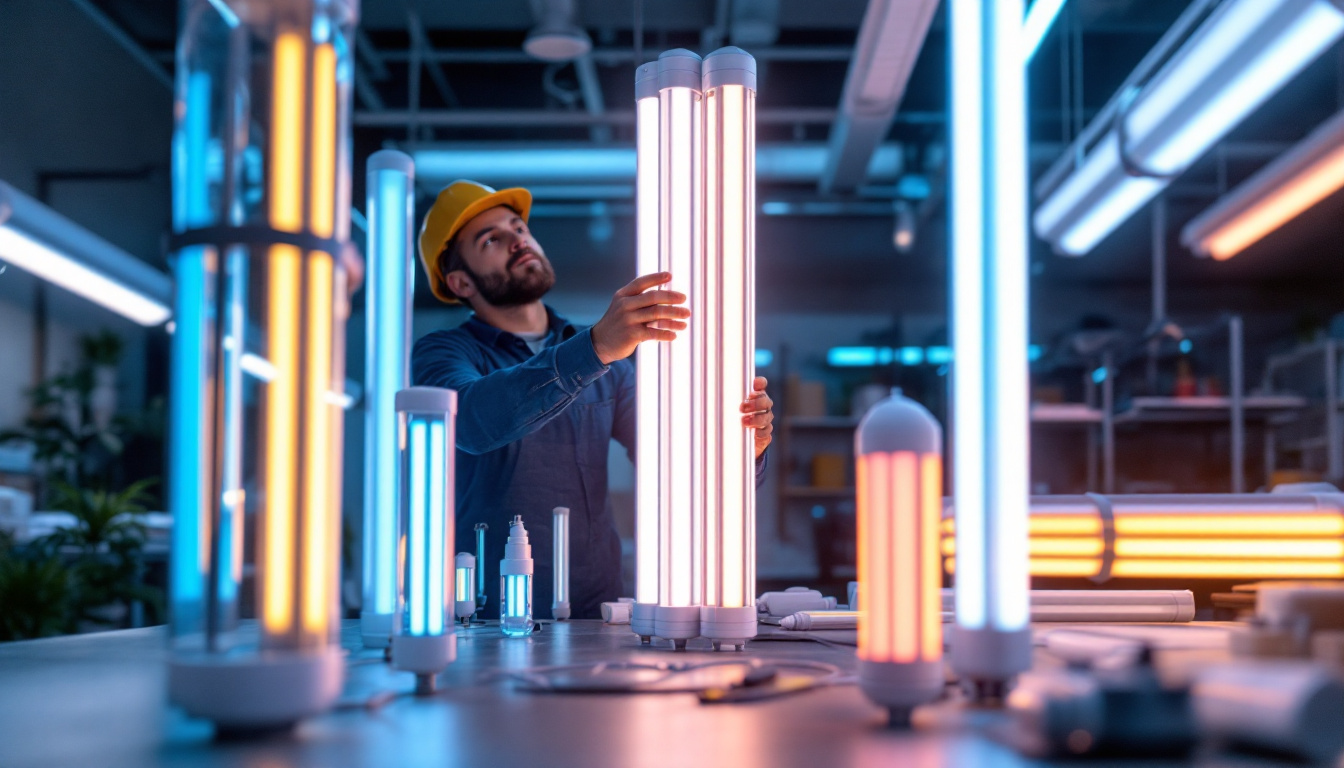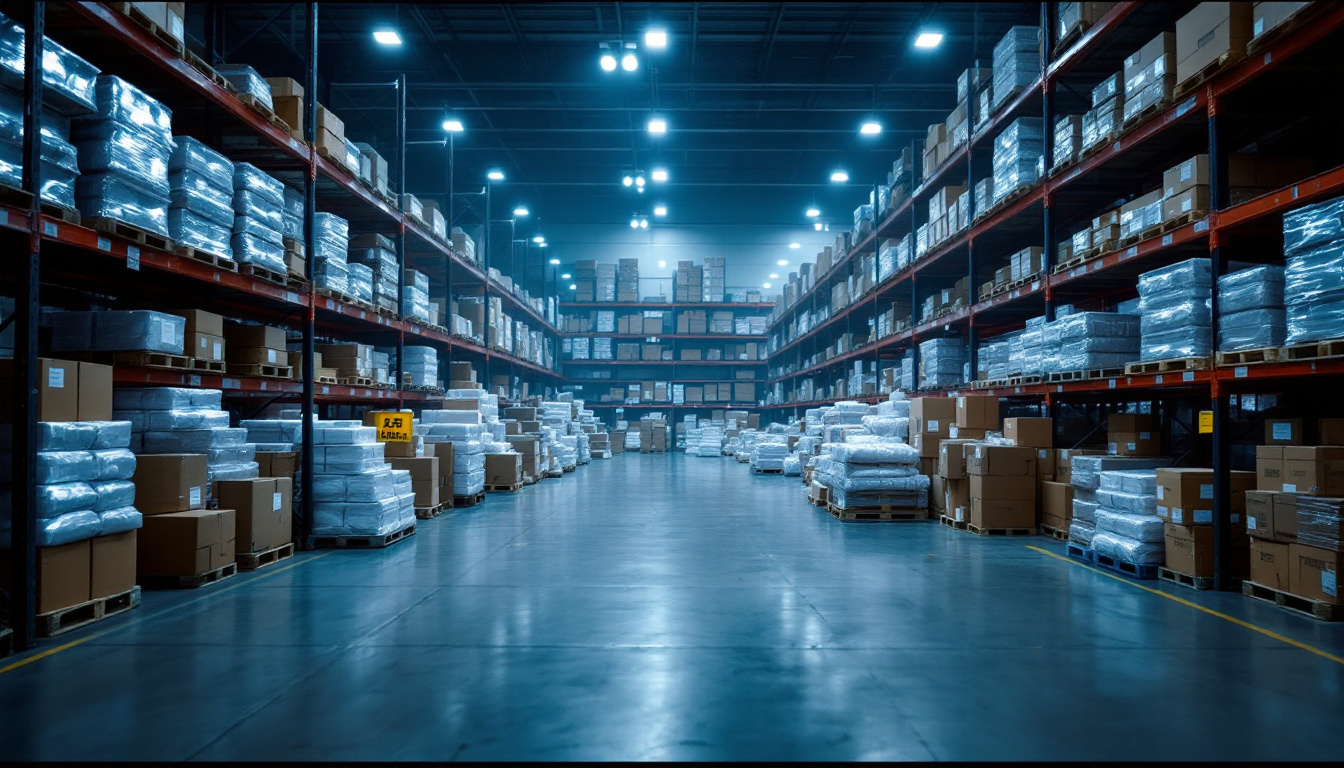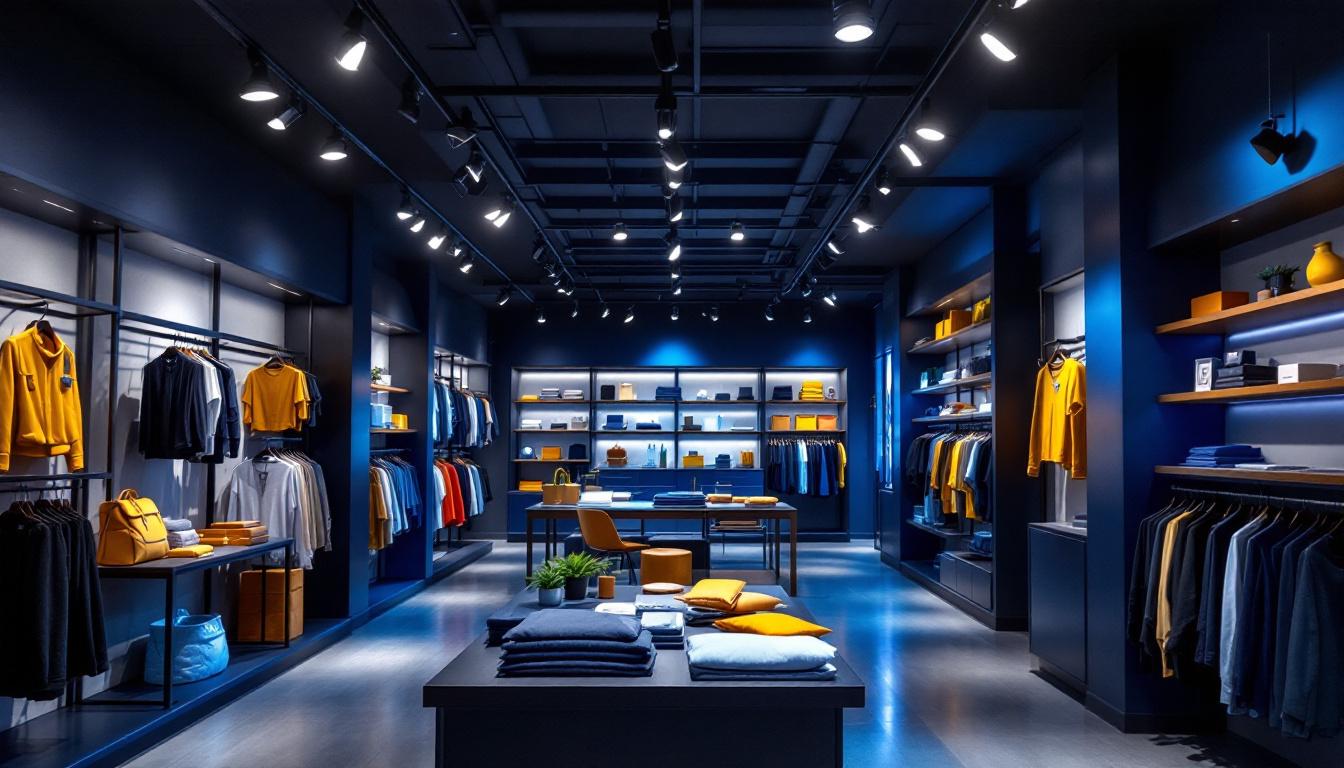
fluorescent tube lamps have long been a staple in the lighting industry, offering a balance of efficiency, longevity, and brightness. For lighting contractors, understanding the nuances of these lamps is essential for providing clients with optimal lighting solutions. This comprehensive handbook delves into the various aspects of fluorescent tube lamps, from their construction and types to installation techniques and maintenance practices.
Fluorescent tube lamps operate on a principle that involves exciting gas to produce light. This section covers the fundamental components and working mechanisms of these lamps, providing a solid foundation for contractors. These lamps are not only energy-efficient but also versatile, making them a popular choice for both residential and commercial lighting solutions.
At the core of a fluorescent tube lamp are several key components: the glass tube, phosphor coating, electrodes, and the gas filling. The glass tube is typically coated on the inside with a phosphorescent material, which emits visible light when excited by ultraviolet (UV) light produced by the gas within the tube. The glass itself is designed to withstand high temperatures and pressures, ensuring longevity and safety during operation.
The electrodes, located at either end of the tube, play a crucial role in initiating the lighting process. When an electric current passes through the gas, it ionizes the gas, creating a plasma that emits UV light. The phosphor coating then converts this UV light into visible light, resulting in the illumination that fluorescent lamps are known for. The efficiency of this conversion process is a key factor in determining the overall energy efficiency of the lamp, with advancements in phosphor technology continually improving light output and color rendering.
Fluorescent lamps come in various types, each designed for specific applications. The most common types include T8, T5, and T12 tubes, distinguished primarily by their diameter and efficiency. T8 lamps, with a diameter of 1 inch, are widely used in commercial settings due to their balance of efficiency and light output. T5 lamps, being slimmer at 5/8 inch, are often favored for their higher efficacy and compact design, making them ideal for spaces with limited installation room. T12 lamps, although older and less efficient, are still found in some applications, particularly in older buildings where retrofitting may not be feasible.
Additionally, there are specialty fluorescent lamps, such as those designed for horticultural use or color-corrected lighting for photography and art studios. horticultural fluorescent lamps are engineered to emit specific wavelengths of light that promote plant growth, making them essential for indoor gardening and greenhouse applications. Color-corrected fluorescent lamps, on the other hand, are formulated to provide a more accurate color representation, which is crucial for artists and photographers who rely on precise lighting conditions. Understanding these variations allows contractors to recommend the most suitable options for their clients’ needs, ensuring optimal performance and satisfaction in diverse lighting environments.
Proper installation is crucial for maximizing the performance and lifespan of fluorescent tube lamps. This section outlines best practices and considerations for contractors when installing these lighting solutions.
Before installation, contractors should assess the specific requirements of the space. Factors such as ceiling height, fixture type, and the intended use of the area will influence the choice of lamp and fixture. It’s also essential to consider the electrical supply and ensure it meets the requirements of the selected fluorescent tube.
Safety is paramount during installation. Contractors should always turn off the power at the circuit breaker before beginning work and use appropriate personal protective equipment (PPE). Additionally, ensuring that the fixtures are compatible with the selected tubes is vital to prevent flickering or premature failure. Furthermore, it’s advisable to inspect the fixtures for any signs of wear or damage, as this can also affect the performance of the new lamps. A thorough pre-installation checklist can help streamline the process and ensure that all necessary tools and materials are on hand, reducing the likelihood of interruptions during the installation.
The installation process for fluorescent tube lamps generally follows these steps:
Contractors may encounter several challenges during installation, such as compatibility issues between the lamp and fixture or improper electrical connections. In some cases, flickering may occur, indicating a need for troubleshooting. This can often be resolved by checking the ballast, ensuring it is functioning correctly and is compatible with the installed lamps.
Another common issue is the need for proper spacing between fixtures, especially in larger areas. Contractors should refer to manufacturer guidelines for optimal spacing to achieve uniform lighting. Additionally, environmental factors such as temperature and humidity can affect the performance of fluorescent lamps. For instance, extreme cold can lead to delayed start times and reduced light output. Therefore, understanding the specific environmental conditions of the installation site can help in selecting the right type of fluorescent tube that will perform best under those circumstances. Regular maintenance checks post-installation can also help in identifying any potential issues early, ensuring that the lighting remains effective and energy-efficient over time.
Regular maintenance is essential to ensure the longevity and efficiency of fluorescent tube lamps. This section discusses maintenance practices that contractors should implement for their clients.
Conducting routine inspections of fluorescent lighting systems can help identify potential issues before they escalate. Contractors should check for signs of wear, such as flickering lights, dimming, or color shifts. These symptoms may indicate that a lamp is nearing the end of its life or that the ballast requires replacement.
Additionally, inspecting the fixtures for dust and debris buildup is crucial, as this can affect light output and efficiency. Regular cleaning can be performed using a damp cloth to wipe down the fixtures and lamps, ensuring optimal performance.
Fluorescent tube lamps have a finite lifespan, typically ranging from 7,000 to 15,000 hours, depending on the type and usage. Contractors should educate clients on the importance of timely replacements to maintain consistent lighting quality. When replacing lamps, it’s vital to dispose of old tubes properly, adhering to local regulations regarding hazardous waste.
The ballast is a critical component that regulates the current to the fluorescent tube. Over time, ballasts can fail, leading to flickering or non-functioning lamps. Regular checks of the ballast and timely replacements can prevent unnecessary downtime and ensure the lighting system operates smoothly.
Contractors should also consider upgrading to electronic ballasts, which are more energy-efficient and provide better performance than traditional magnetic ballasts. This upgrade can enhance the overall efficiency of the lighting system.
Fluorescent tube lamps are known for their energy efficiency compared to traditional incandescent bulbs. However, understanding their environmental impact and energy consumption is crucial for lighting contractors aiming to provide sustainable solutions.
Fluorescent lamps consume significantly less energy than incandescent bulbs, making them a popular choice for commercial and residential applications. The energy savings can be substantial, particularly in high-use areas such as offices, schools, and retail spaces. Contractors should highlight these benefits to clients, emphasizing the long-term cost savings associated with using fluorescent lighting.
While fluorescent lamps are more energy-efficient, they do contain small amounts of mercury, which poses environmental concerns. Contractors must educate clients about proper disposal methods and the importance of recycling old fluorescent tubes. Many communities offer recycling programs specifically for hazardous waste, including fluorescent lamps.
Moreover, the shift toward LED technology is gaining momentum, as LEDs do not contain mercury and offer even greater energy efficiency. Contractors should stay informed about advancements in lighting technology and be prepared to recommend LED options when appropriate.
The lighting industry is continually evolving, and fluorescent tube lamps are no exception. This section explores recent innovations that contractors should be aware of to stay competitive in the market.
Smart technology is making its way into fluorescent lighting systems, allowing for enhanced control and efficiency. Smart ballasts and fixtures can be integrated with building management systems, enabling contractors to offer clients customizable lighting solutions that adapt to occupancy and daylight levels.
These innovations not only improve energy efficiency but also enhance user experience by allowing for personalized lighting settings. Contractors should consider incorporating smart lighting solutions into their offerings to meet the growing demand for intelligent building systems.
Advancements in phosphor technology have led to improvements in color rendering for fluorescent lamps. Higher Color Rendering Index (CRI) ratings allow for more accurate color representation, which is particularly important in settings such as retail and art galleries. Contractors should stay updated on these advancements to provide clients with options that meet their specific lighting needs.
Fluorescent tube lamps remain a vital part of the lighting landscape, offering efficiency and versatility for various applications. For lighting contractors, understanding the intricacies of these lamps—from their components and installation techniques to maintenance practices and innovations—is crucial for delivering exceptional service to clients.
By staying informed about the latest developments in fluorescent lighting and emphasizing energy efficiency and environmental responsibility, contractors can position themselves as trusted experts in the field. Whether working on commercial projects or residential installations, the knowledge contained in this handbook serves as a valuable resource for lighting contractors aiming to excel in their profession.
Ready to enhance your lighting projects with the efficiency and quality you deserve? Look no further than LumenWholesale for all your fluorescent tube lamp needs. Our commitment to providing contractors with spec-grade lighting products at unbeatable wholesale prices ensures that you can deliver the best value to your clients. With our extensive selection that meets the highest industry standards and the convenience of free shipping on bulk orders, you can trust that you’re getting premium lighting without the hidden fees. Elevate your lighting solutions today by visiting Wholesale Lighting at the Best Value and experience the LumenWholesale difference.

Discover the best places to purchase lighting fixtures with insights from top lighting contractors.

Discover how lighting contractors can enhance their business by mastering the art of living room ceiling lighting.

Discover why purchasing LED wall pack retrofit kits in bulk from local distributors might not be the best choice.

Discover how track lighting can transform retail spaces by enhancing product displays and creating an inviting atmosphere.